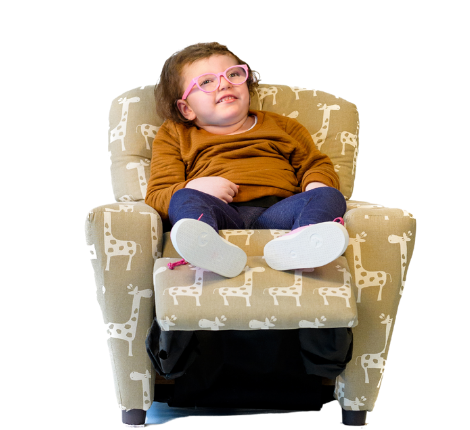Five-year-old Mona Zehaf is a one-of-a-kind girl. Literally. Her neurologist, Jennifer Madan Cohen, MD, the medical director of Connecticut Children’s Epilepsy Center, says that she is likely the only child in the world who is missing two particular seizure-related genes. Because she is missing those genes, Mona suffers frequent, severe epileptic seizures. “The seizures that are most concerning are tonic seizures,” says Dr. Madan Cohen. “In these seizures, her whole body becomes as stiff as a board as her muscles contract. That includes her lungs. And these seizures can last for three minutes.”
Some children have a mutation in one of Mona’s missing genes, and develop something called Dravet syndrome. Because Mona is completely missing that gene instead of having a mutation in it, her symptoms are not identical, but a that diagnosis provides a good starting place for her medical team. They are using treatments similar to those used with typical Dravet syndrome.
Between the two missing genes, Mona has several other physical issues. Mona has very low muscle tone and is not ambulatory. She’s in a wheelchair. She doesn’t eat by mouth and has a feeding tube for her nutrition. She’s also nonverbal. “She doesn’t use words,” her mother, Jean, says, “but she sure knows how to communicate with her eyes.” In addition, her low muscle tone means she has frequent respiratory issues. “She recently had a common cold,” Jean says, “and she was in the hospital for two weeks.”
Because Mona’s seizures can be so severe, she is in a high-risk group for SUDEP, or sudden unexpected death in epilepsy.
In addition to the two gene deletions, Mona has something called secondary adrenal insufficiency (your adrenal glands produce hormones that regulate most of your body’s essential functions). “Day to day,” Jean says, “her adrenal function is near perfect, but with an illness or a stressor to her body, she becomes adrenal insufficient and needs a pretty high dose of steroids to keep her body doing what it needs to do.”
As you can imagine with these symptoms and conditions, Mona requires constant attention. “She is never alone,” Jean says. “She requires at least one adult eye on her all the time, and it has to be someone who knows her really well.” She also has irregular sleep patterns, often sleeping through the day and awake all night. Her parents have to work in shifts at their jobs, taking turns to be with Mona.
And yet they are nothing but grateful. “We have seen her through several days where we were doing one day at a time down to one hour at a time to one minute at a time,” Jean says. “We were just looking at that clock, hoping to make it to 6:02 and then 6:03. Then comes 7:15 and she opens her eyes and gives us the most breathtaking smile that you could ever imagine. We were just sure that it couldn't ever feel any worse than this, or it couldn't feel any harder, and she just takes it away. I'm not sure where she takes it, but she takes it right from us. And she puts it somewhere that is so special.”
